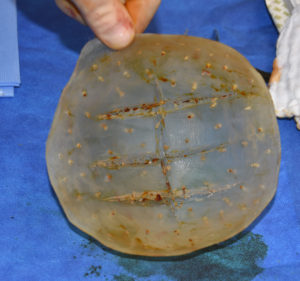Custom skull implants provide a reliable and safe method for augmenting flat or deficient areas of the head. Like all face and body implants that are placed for aesthetic purposes, the surgery is fundamentally about placing a performed implant into the desired tissue pocket through the smallest incision as possible that will permit it. This is important because a scar is an aesthetic tradeoff and one that should not be overly noticeable and detracts from the augmentative effect of the implant.
To allow this implant principle to be effective, it requires a feature of the implant that is important…the implant must be deformable to pass through an incision that is smaller in diameter than the implant. This is easy to understand in a silicone breast implant, for example, and is the exact reason why the funnel insertion device was made to insert them through a very small skin incision. But it is a feature of a skull implant that is also needed to place it through a scalp incision. While a long coronal scalp incision can be used to place a skull implant, and the implant would not have to be deformable, few patients however want this scar burden for an elective aesthetic skull reshaping procedure.

The six pack etching technique removes material from the internal surface of the implant which allows it to be rolled more easily for insertion through a small scalp incision.
Dr. Barry Eppley
Indianapolis, Indiana


